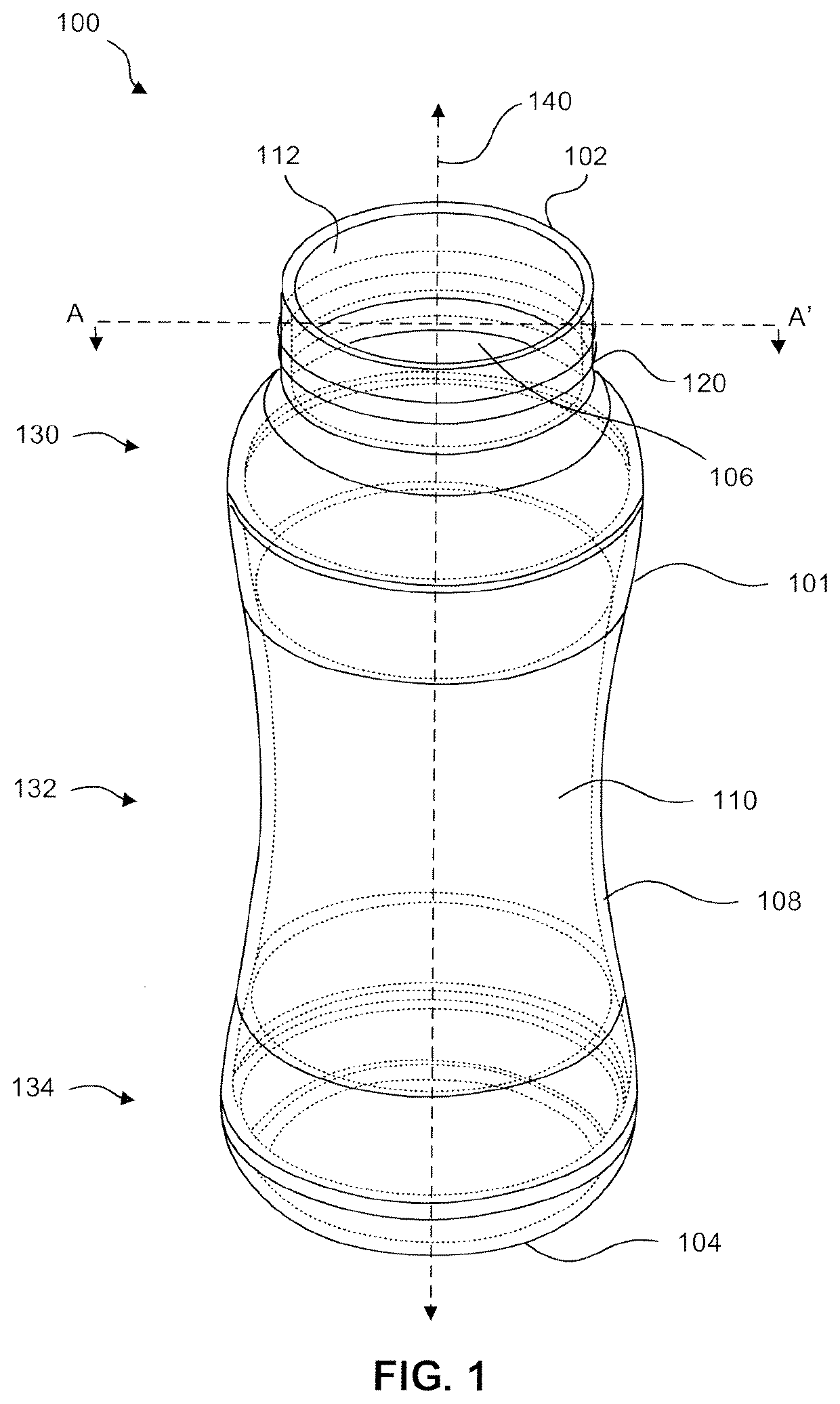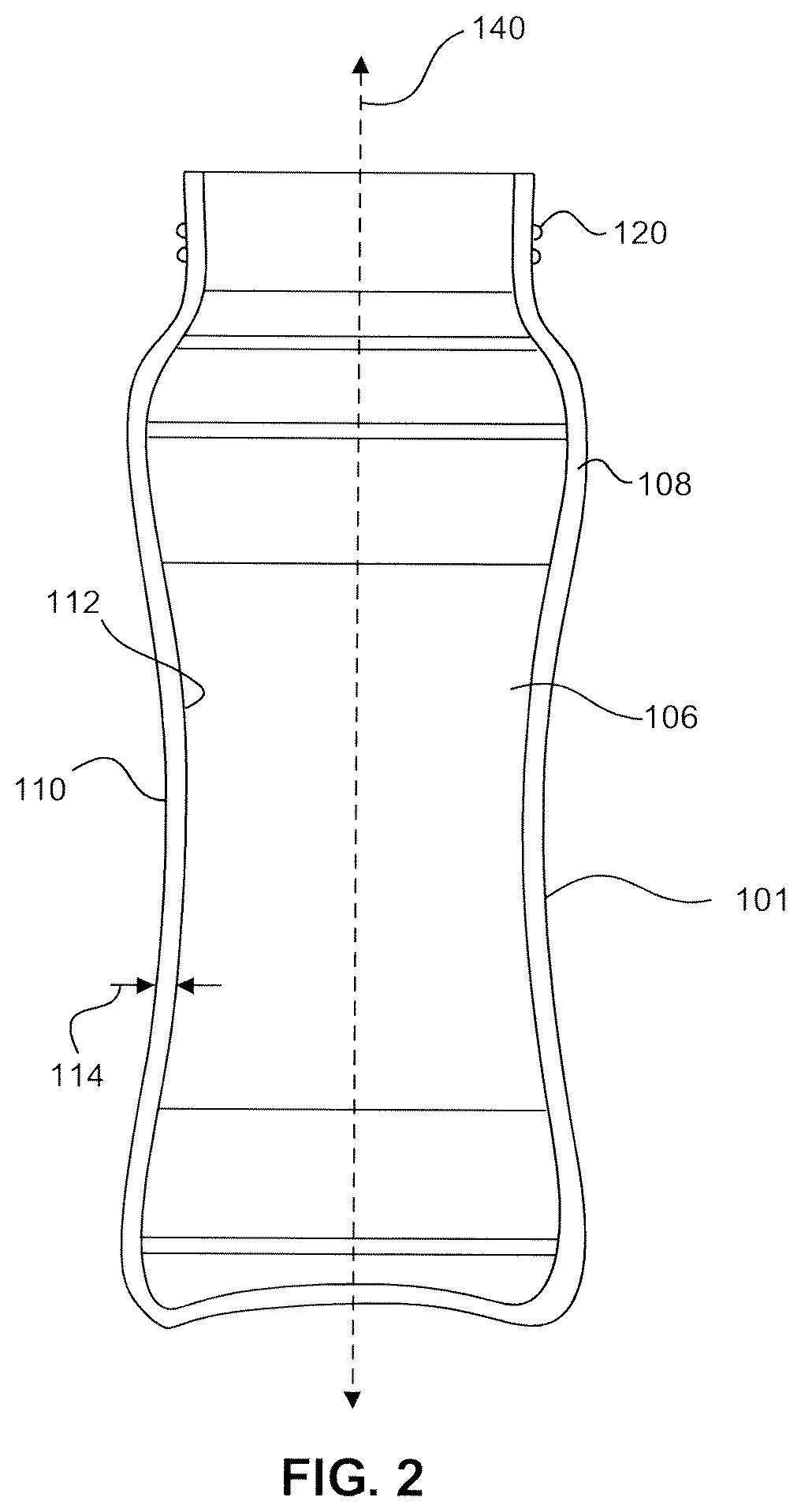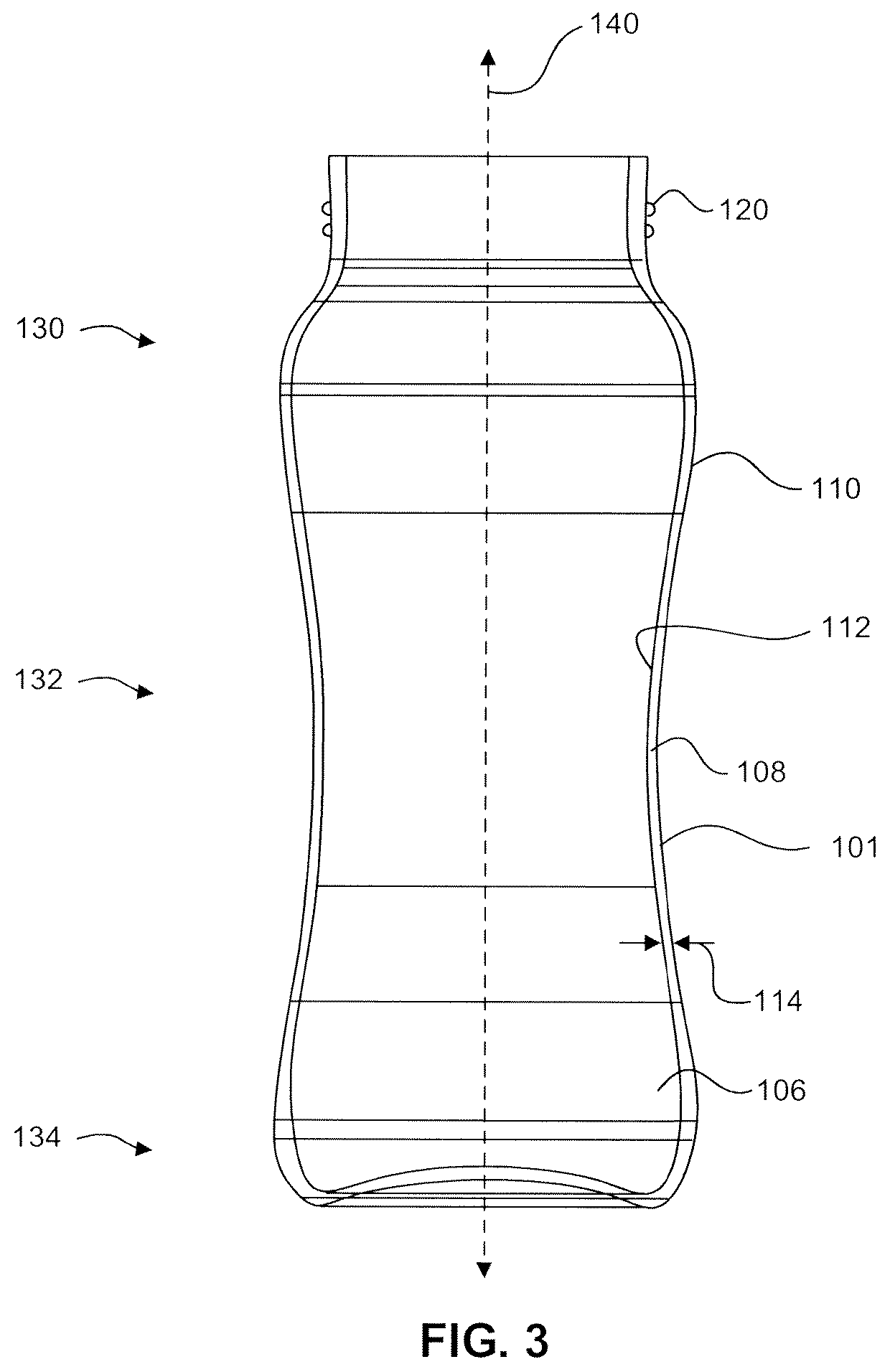High strength transparent glass-ceramic containers
a glass-ceramic, high-performance technology, applied in the direction of feeding bottles, rigid containers, transportation and packaging, etc., can solve the problems of not being transparent, leaking harmful chemicals into the contents of containers, and not being able to meet the needs of us
- Summary
- Abstract
- Description
- Claims
- Application Information
AI Technical Summary
Benefits of technology
Problems solved by technology
Method used
Image
Examples
example 1
[0153]Example glass and glass ceramic compositions (in terms of wt %) and properties for achieving transparent glass ceramics are set forth in the Table 2 and are determined in accordance with techniques conventional in the glass art. Precursor glasses are formed having the Compositions 1-16 listed in Table 2. The precursor glasses are then subjected to a ceramming cycle having a glass homogenization hold at 540° C. for 4 hours, a nucleation hold at 600° C. for 4 hours, and a crystallization hold at a temperature in a range from 630 to 730° C. for 4 hours. The following nomenclature is used in Table 2 to describe the ceramming cycle: glass homogenization temperature-hold time / nucleation temperature-hold time / crystallization temperature-hold time.
[0154]The liquidus temperature is the temperature where the first crystal is observed in a standard gradient boat liquidus measurement (ASTM C829-81 and it progeny). This involves placing crushed glass particles in a platinum boat, placing t...
example 2
[0166]Example glass and glass ceramic compositions (in terms of wt %) and properties for achieving translucent glass ceramics are set forth in the Table 3 and are determined in accordance with techniques conventional in the glass art. Precursor glasses are formed having the Compositions 17-29 listed in Table 3. The precursor glasses are then subjected to a ceramming cycle indicated in Table 3 below.
TABLE 3Composition17181920212223SiO2 (wt %)78.378.378.378.378.378.376.3Al2O3 (wt %)10.59.39.39.37.58.18.7B2O3 (wt %)10.60.60.60.00.20.4Li2O (wt %)9.510.710.710.712.511.911.3Na2O (wt %)1.71.71.71.71.71.71.7K2O (wt %)0.00.00.00.00.00.00.0ZnO (wt %)0.00.00.00.00.00.00.0ZrO2 (wt %)4.04.06.08.04.04.04.0P2O5 (wt %)3.02.02.02.02.02.22.4Ceramming700° C.-700° C.-700° C.-700° C.-540° C.-540° C.-540° C.-cycle0.5 hr / 800° C.-0.5 hr / 800° C.-0.5 hr / 800° C.-0.5 hr / 800° C.-4 hr / 600° C.-4 hr / 600° C.-4 hr / 600° C.-0.5 hr0.5 hr0.5 hr0.5 hr4 hr / 730° C.-4 hr / 740° C.-4 hr / 730° C.-4 hr4 hr4 hrPhasePetalite,Petali...
PUM
| Property | Measurement | Unit |
|---|---|---|
| Weight | aaaaa | aaaaa |
| Length | aaaaa | aaaaa |
| Length | aaaaa | aaaaa |
Abstract
Description
Claims
Application Information
 Login to View More
Login to View More - R&D
- Intellectual Property
- Life Sciences
- Materials
- Tech Scout
- Unparalleled Data Quality
- Higher Quality Content
- 60% Fewer Hallucinations
Browse by: Latest US Patents, China's latest patents, Technical Efficacy Thesaurus, Application Domain, Technology Topic, Popular Technical Reports.
© 2025 PatSnap. All rights reserved.Legal|Privacy policy|Modern Slavery Act Transparency Statement|Sitemap|About US| Contact US: help@patsnap.com



